Function 4: Schedule Delays
On construction projects, schedule delay claims that affect the project completion date are becoming a common event. Those are the delays that are beyond the contractor’s control and the events that entitle the contractor to delay claims are normally specified in a contract provision. For example, under the FIDIC Red Book conditions of the contract, the table below provides a list of sub-clauses that could result in requests to extend a contract’s completion date.
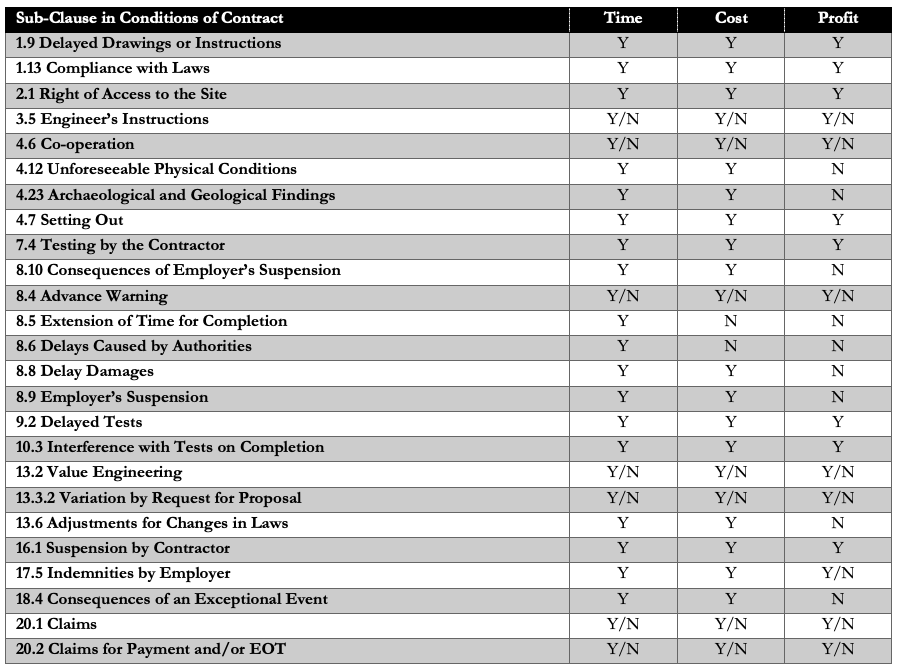
The Time Impact Analysis (TIA) is a widely used schedule delay analysis technique used by contractors to quantify the effects of an unplanned event that increases the project’s scope of work (SoW). The TIA evaluates the potential impacts on the schedule to determine contract time extensions due to delays that are not the contractor’s responsibility. The TIA is a ‘Forward Looking’ prospective analysis that models and determines the impact of a delay to project completion on an accepted project schedule baseline or update.
The PMWeb custom form builder allows creating the TIA Report. This report includes fields for the project name, TIA reference number, the title of the delayed event, date of approved updated schedule used for analysis, and schedule title. It also includes fields for contractual completion date and total float value before the TIA and calculated completion date and total float value after TIA. As well, it includes how many delay days are excusable and how many are inexcusable, how many of the excusable delay days are compensable and how many are non-compensable, a detailed description of the delay causes, and a detailed description of the delayed work.

The form also has a table to capture the details of the delayed event activities, which becomes part of the Fragnet. The table captures the activity ID and describes each delay event’s start and finish dates and duration. Additional fields can, of course, be added if needed.

The TIA template attachment tab links the different PMWeb records relevant to the delay event. These include drawings, transmittals, daily reports, meeting minutes, change orders, and correspondence. Moreover, PDF versions of the project schedule used for the time impact analysis and impacted project schedule can be uploaded and stored in the PMWeb document management repository to be attached to the TIA Report. Other supportive documents can also be uploaded and attached to the report.
In addition, the workflow tab captures the workflow steps for the project team members involved in performing the time impact analysis. These include the project site team involved in identifying the delay event, the cause of the delay, and the work delay. Further, it includes the project planner responsible for creating the Fragnet and running the TIA to determine the newly-calculated completion date and total float value. The workflow steps could also include the team members responsible for the contractual and commercial matters to establish entitlement for the EoT request and quantify the associated cost impact of this delay.
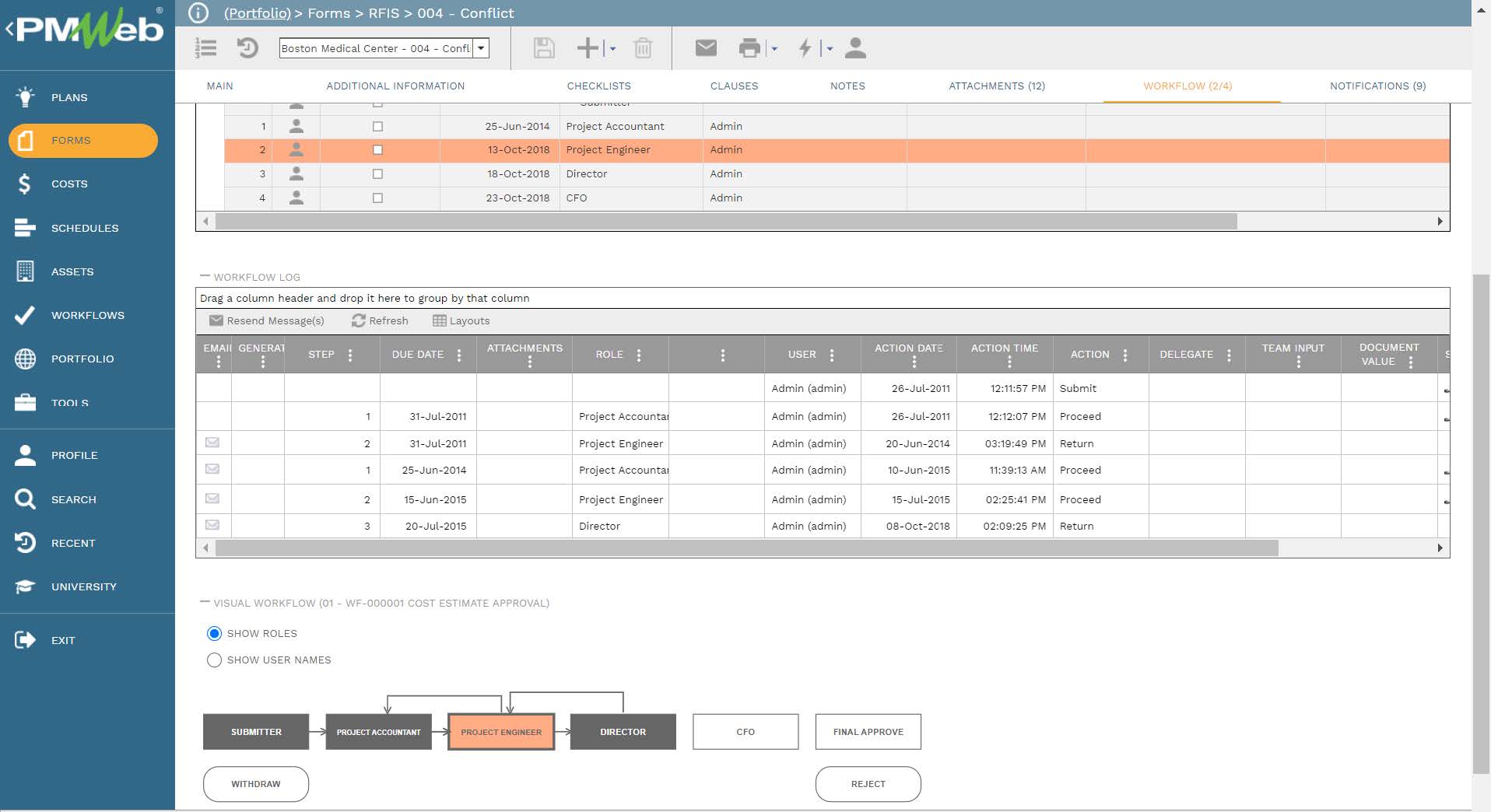
The TIA Report Register summarizes the captured TIA to be presented in the desired form and format. This register includes a table to capture the details of the TIA, displaying most of the information captured in the TIA Report. It also includes three donut visuals, the first of which shows the number of excusable and non-excusable delays determined from the TIA analysis. The second details how many of the excusable delays are entitled to financial compensation and how many are not. The last visual describes the number of TIA reports submitted by status: New, Approved, and Rejected.
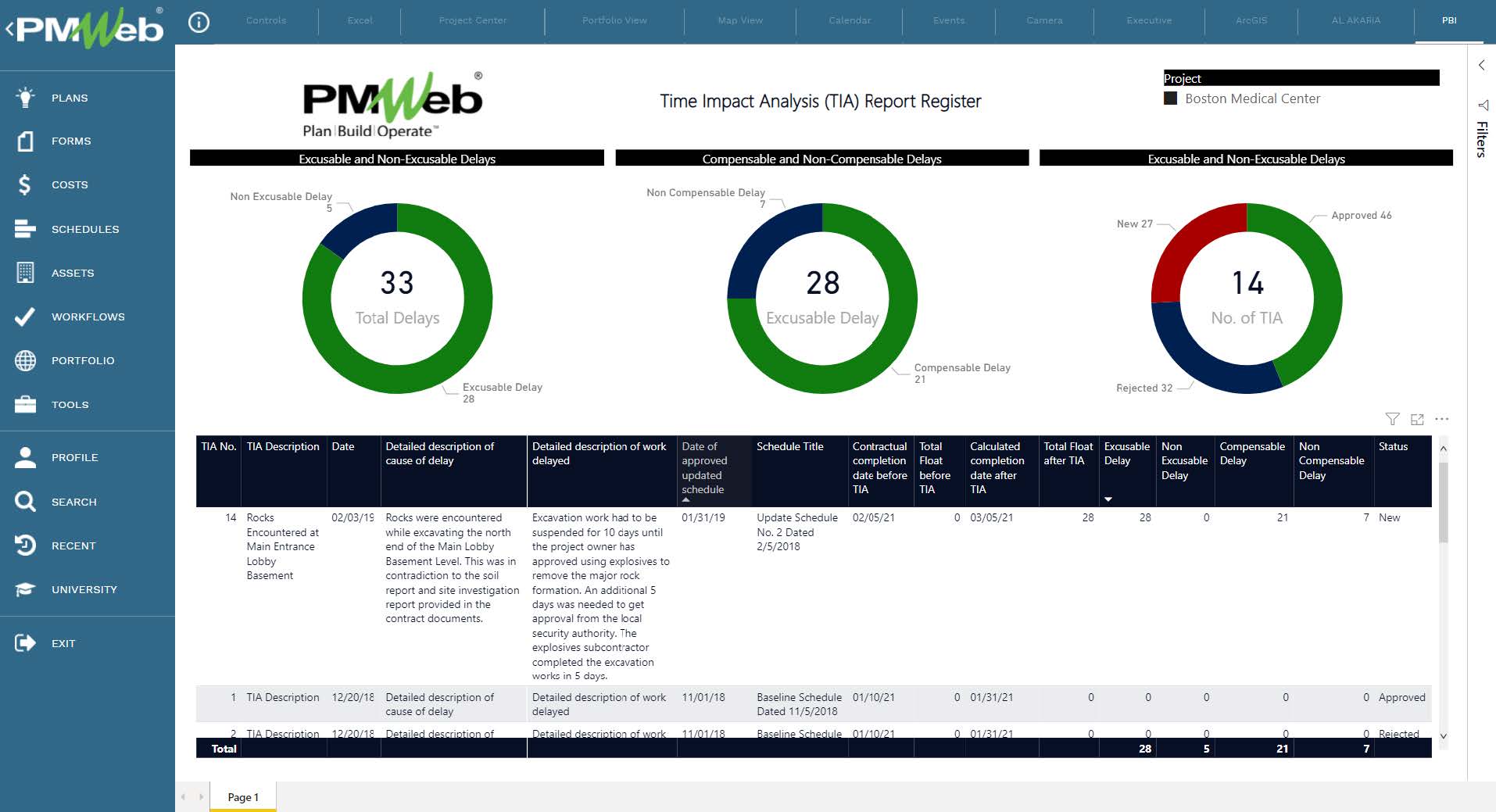
The PMWeb custom form builder also creates the form for submitting, reviewing, approving, or rejecting EoT requests submitted by the contractor. This form becomes the basis for monitoring, evaluating, and reporting the status of the EoT requests using the EoT Requests Register.
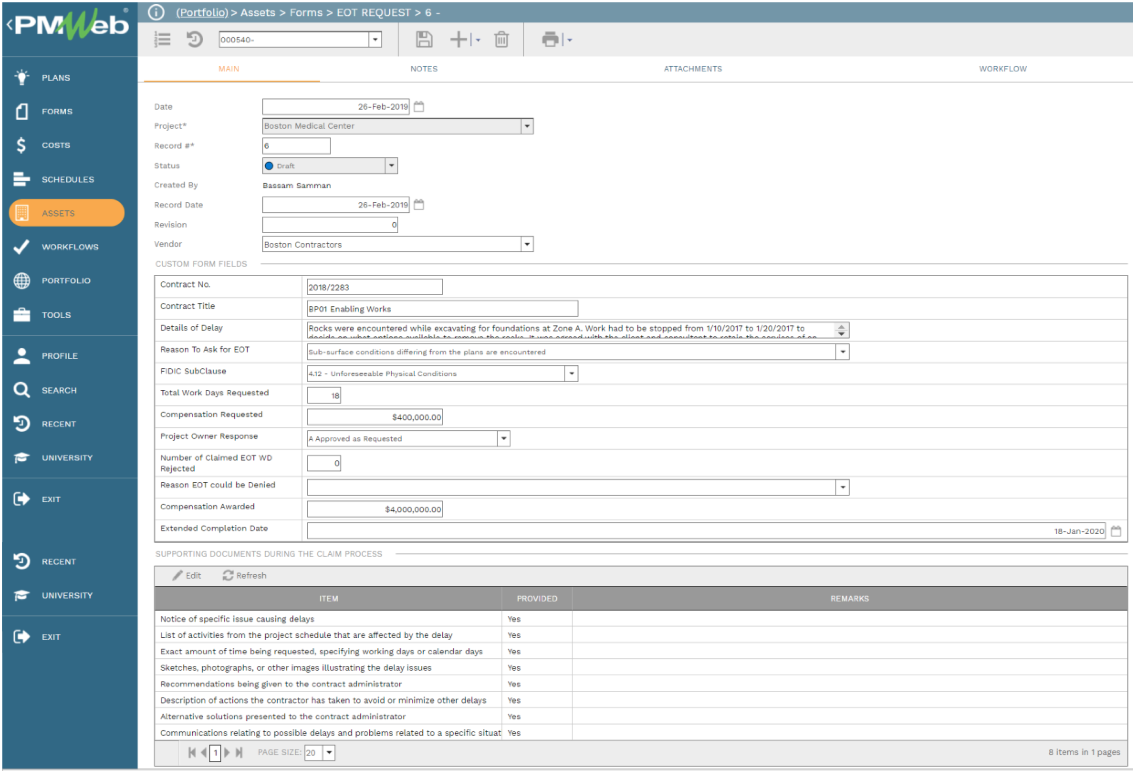
The status and details of all submitted EoT requests will be captured in the EoT Requests Register. This register includes a tabular log showing the details of all submitted EoT requests. It also includes visuals to describe the EoT requests by reason, approved or awarded EoT requests by reason, EoT awarded financial compensation by reason and total submitted EoT claims by status. As well, the register displays the current extended project completion date.
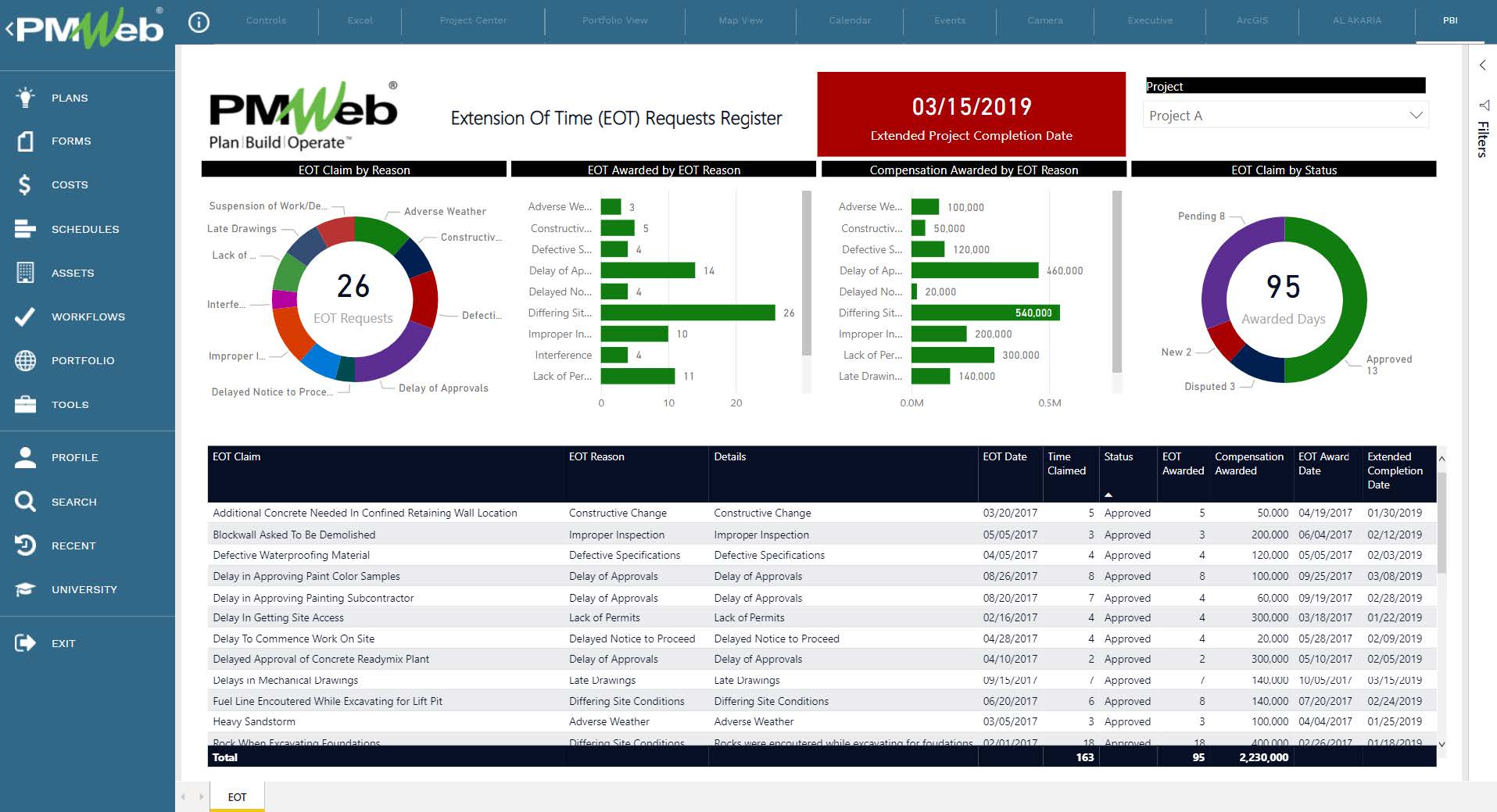
One of the key challenges that organizations involved in delivering construction projects face when they prepare or defend construction claims is how to ensure that their submission or response is complete and well-supported to avoid the delays associated with incomplete or unsubstantiated claims submissions.
One proven best practice is creating construction claims analysis checklists specific to every type of claim. In an article entitled “Construction Claims Analysis Checklists” published by Richard Long, PE, and Rod Carter, CCP, PSP, the authors provide examples of two proposed checklists: ‘Claim Analysis Related to Schedule Delays’ and ‘Claim Analysis Related to Quantities, Manhours, and Costs.’ Every checklist provides details of items that must be covered in the claim preparation of defending these two types of construction claims. There could, of course, be many other checklists to cover the different categories of construction claims.
Using PMWeb, organizations can create these checklists to verify that all items needed to be covered in preparing or defending a claim have been done in a full and proper format. The PMWeb custom form builder allows creating these checklists, that can be modified to reflect the requirements for every claim category based on their experience and knowledge.
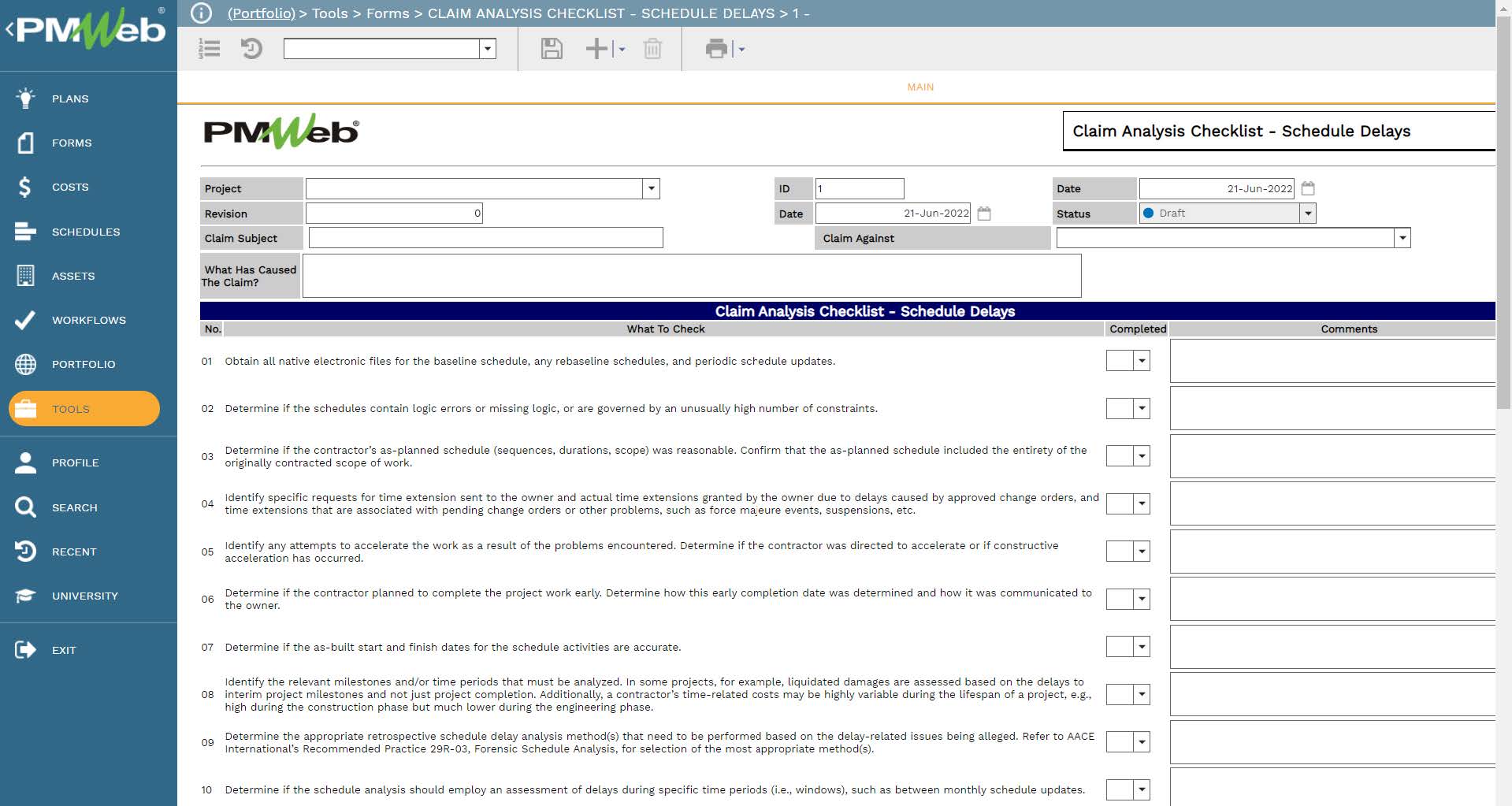
The project schedule data captured in the PMWeb schedule module becomes the basis for the data used in the 4D schedule reports. This data is extracted directly by MS Power BI. This ensures that the project stakeholders receive the 4D Schedule reports, or any other schedule reports, that are the baseline. The updated or revised schedules are then formally submitted, reviewed, and approved before being shared with the project stakeholders.
The PMWeb custom form builder helps create the input form for the narrative text that is part of the 4D Schedule Analysis reports. It must be completed by the planning and scheduling engineer responsible for analyzing and reporting on the project delays. The content of the form can be configured to include all the fields that might be needed for the reports. Nevertheless, at the very least, it should include the progress period data date, contractor name, narrative text, total schedule delays to date, delays due to the contractor, delays not due to the contractor, and delays due to third parties, i.e., neither the contractor’s nor the project owner’s authorized representatives.
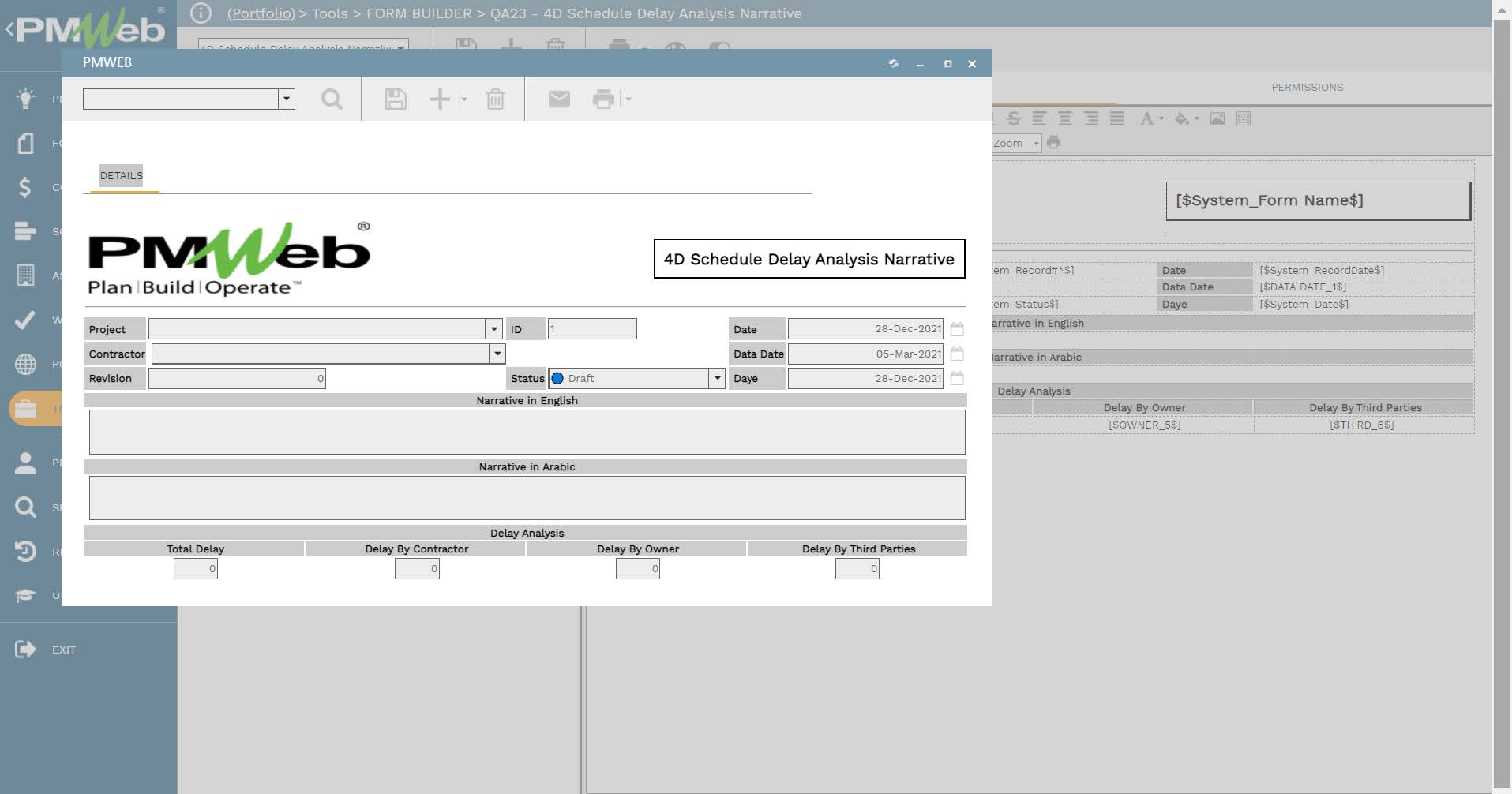
The data captured in PMWeb is used to update the information displayed in the 4D Schedule Analysis report as new schedule data becomes available at the end of each progress period. In addition, the report reader can select specific activities to be viewed in the report or choose the values of any other attribute defined in the report. In addition, selecting a BIM object from the BIM visual automatically adjusts the report’s content to reflect the data associated with the selected PMWeb object or asset.
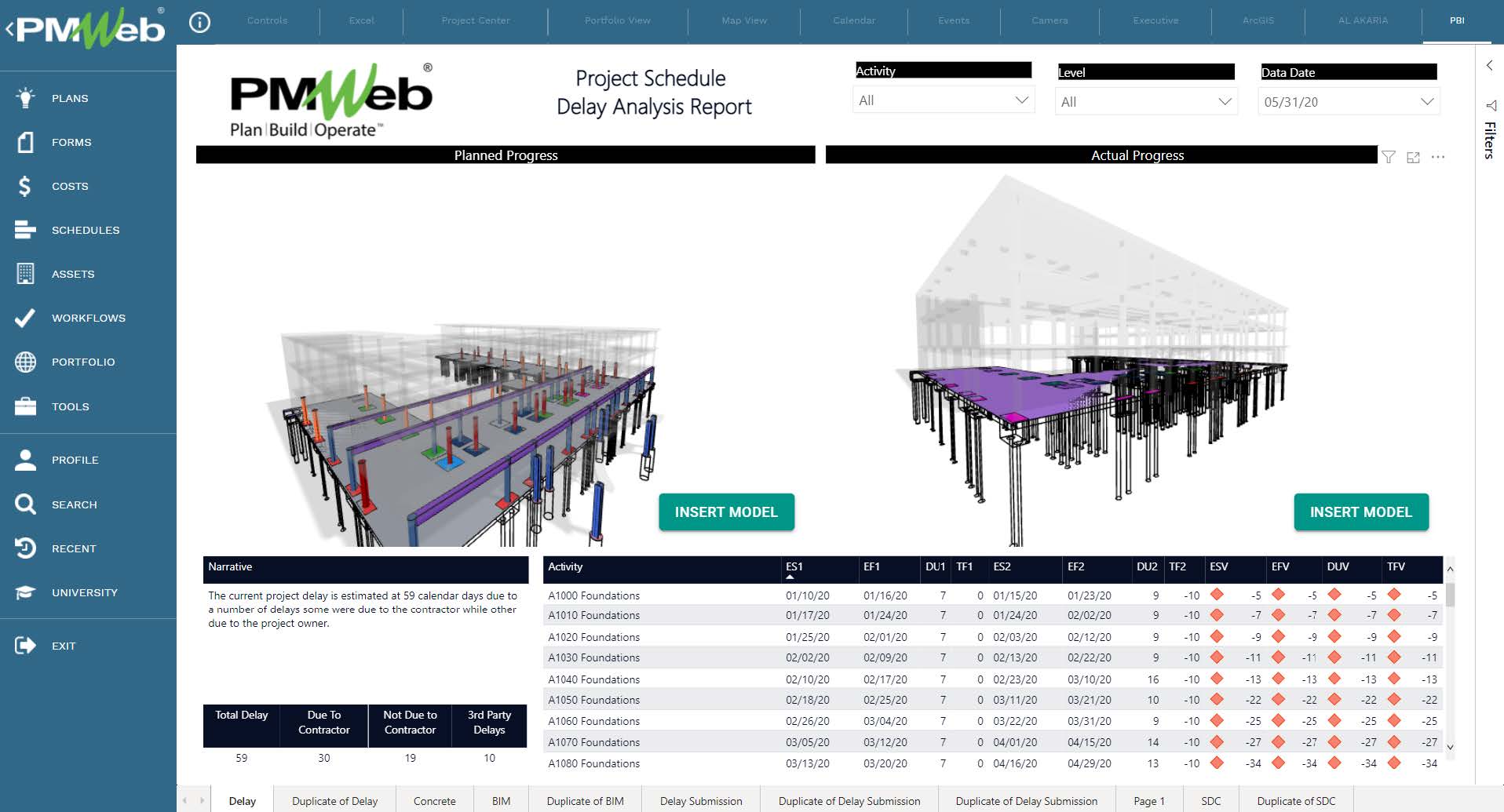
Reference
The content of this article was extracted from the book titled “Let’s Transform: Enabling Digital Transformation of Capital Construction Projects Using the PMWeb Project Management Information System – 2nd Edition”. The book was written by the author of the posted article, Bassam Samman.
The book provides project owners with oversight on how technology available today can support their efforts to digitally transform the management of their projects’ portfolios. For each capital project life cycle stage, PMWeb is used to detail how the relevant project management business processes can be digitalized to enforce transparency and accountability in delivering projects. In addition, MS Power BI was used to show how the real-time, trustworthy data captured in PMWeb can be aggregated, modeled, monitored, evaluated, analyzed, and reported at anytime, anywhere using any device.



